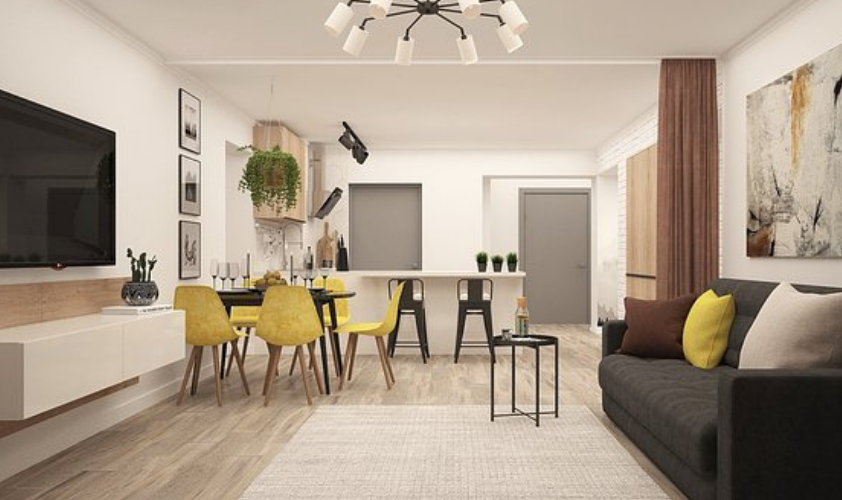Flexible floor plans are an excellent way to create versatile interiors that can adapt to changing needs over time. By incorporating modular furniture, movable walls, and other design elements, homeowners can transform their living spaces to suit different purposes, such as entertaining, work, or relaxation.

One way to create a flexible floor plan is to incorporate multipurpose rooms. For example, a guest bedroom can also serve as a home office or a playroom for kids. A large living room can be divided into smaller areas for different activities, such as watching TV, playing games, or reading.
Another way to create flexibility is to use movable partitions, such as sliding doors or curtains, to separate different areas of a room. This allows homeowners to create private spaces when needed and open up the space when they want to entertain or have larger gatherings.

Modular furniture is also an excellent way to create a flexible interior. Pieces like modular sofas, bookshelves, and storage units can be easily reconfigured to suit different needs and can be moved from room to room as needed.
When designing a flexible floor plan, it's important to consider the flow of traffic and how different areas of the space will be used. It's also essential to think about lighting and how to create zones that are well-lit for specific activities.

Designing flexible floor plans is important for a number of reasons:
1. Accommodate changing needs: Life is unpredictable, and our needs and lifestyles can change over time. A flexible floor plan allows for easy adaptation to changing needs, such as adding a home office or creating a play area for children.
2. Future-proofing: A flexible floor plan can help to future-proof a home, ensuring that it remains relevant and functional for years to come. This can be especially important if you plan to stay in the home for an extended period of time.
3. Efficient use of space: A flexible floor plan allows for a more efficient use of space, which can help to maximize square footage and make the most of smaller homes or apartments.

4. Versatility: A flexible floor plan allows for a variety of uses, from entertaining guests to relaxing with family, which can help to increase the overall functionality and versatility of a space.
5. Resale value: A home with a flexible floor plan can be more attractive to potential buyers, as it offers more versatility and adaptability than a home with a more rigid layout.
Pic Courtesy Internet.

Comments